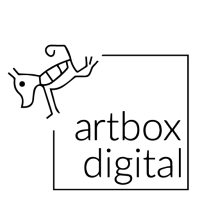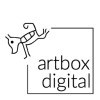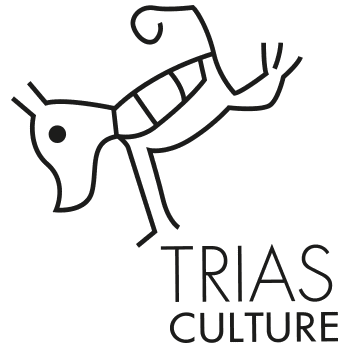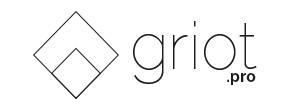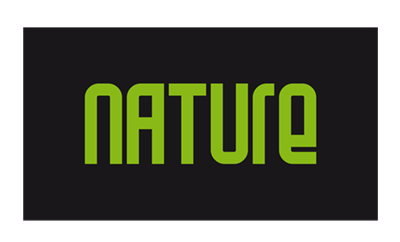
Can you tell us about how Plataforma Bogotá started, and the local context in which it emerged?
Plataforma Bogotá is an interactive laboratory for art, science and technology, focused on the exploration of a series of diverse questions from an interdisciplinary and inclusive way. As a space for creation, it promotes the free access to the production, research, formation and sharing of art, science and digital culture. When Plataforma started in 2011, there were some spaces related to what we do here, but they mainly belonged to universities and private associations, reducing the outreach potential of these spaces. That is why Plataforma Bogotá, as a space belonging to the city of Bogotá, is a public space that was able to provide an open platform for the people who already worked with these topics. Even though Plataforma Bogotá didn’t start the conversation and interest around the intersections of art, science and technology, it surely became an important central gathering space, where these ideas and efforts were made more visible, collaborative and at larger scales.
Was there a critical mass of artists working with and reflecting on digital tools, or was it necessary to first start promoting and forming new artists and researchers in these forms of artistic production?
Colombia had a very strong community of video artists specially, who had experimented with the possibilities of the medium both analogous and digitally. This community pioneered the work with technology, but since its creation in 2011, Plataforma Bogotá provided a space that strengthened a community that didn’t have a physical space, or grants directed to technology-based arts. Plataforma provided a space for interdisciplinary projects across various different disciplines like applied sciences, arts, humanities, social sciences, math, physics, etc. and it provided the system of experimental laboratories, a new way of understanding artistic research. Plataforma has allowed the connection between various generations of artists who work with art, science and technology, specially at a national and Latin American level so far.
What’s the status that Plataforma Bogotá has? Since it is supported by the Mayor’s office of Bogotá, is it a public or an independent entity? Are there policies at the city level interested in supporting these contemporary arts? How is this tied to the global policies of development of the city of Bogotá?
Plataforma Bogotá is the first and only media lab in Bogotá, which started operating in 2011 through the direction and content production of Andrés García La Rota with the support of the visual arts direction of the Gilberto Alzate Avendaño foundation. Since 2017, Plataforma is part of IDARTES (the institute for the arts of the city of Bogotá), and is part of the institute’s strategic line on art, scientific culture, technology and city, which is now coordinated by Andrés. We (Raquel and Juan Pablo) started codirecting Plataforma this year. This new strategic line that is part of the city’s cultural and development plan, is the first official space for intersectional practices in art, science and technology, offering several multidisciplinary grants open to the public, and launching several projects such as Plataforma, an experimental radio and TV network, seminars, workshops, and others. The city has been attempting to create public policies over the last years, which enhance the opportunity for citizens to appropriate public space, but also to integrate the arts into the functioning of the urban landscapes. There’s still much to be done, but several projects are being supported, which are contributing to achieve this goals.
What are the objectives, working programs and main achievements of Plataforma Bogotá so far?
The most important thing Plataforma has achieved is to open for the first time in Colombia, a “2.0 thinking space and of live thinking, where the fields of experimentation and uncertainty are seen as positive spaces for creation and research,” as Andrés García La Rota says. We have achieved this through interactive laboratories, expanding the notions of a 2.0 culture, meaning more interactive, participatory and experimental practices. Our main objective is creating spaces for open and transdisciplinary sharing, opening these opportunities to the entire city and other collaborators both nationally and internationally. We aim to cross disciplines with the participation of people from different ages and professional profiles, in order to create both functional and artistic models and prototypes.
What type of artists and professionals participate in your programs? How are these selected?
Our programs are directed, proposed and/or attended by hackers, developers, programmers, designers of all fields, sound artists, visual artists, archeologists, anthropologists, philosophers, architects, urbanists, biologists, chemical engineers, systems engineers, instrument designers… The profiles of artists and professionals that both coordinate and participate in our laboratories, are very varied and heterogeneous, depending on the types of laboratories. If you take a look at our website, you will find laboratories that tackle themes that go from food, such as the “bogofagias” one, or water as a plastic, electronic and scientific matter, such as the interactive lab on water, or the development of intelligent textiles and clothing. We have also dealt a lot with urban themes such as the “Calle 22” lab, and also with experimental writing using web platforms.
We develop some activities as initiatives from the team in Plataforma, but most of the laboratories are proposed by the general public and selected by a jury each year, which is invited by IDARTES. All of our activities are free to the public, and we do open calls for participants through a public invitation. Then, the professionals and artists in charge of each workshop selects the team of participants that they consider appropriate, taking into account the profiles specified in the open call. You can take a look at our last open call, to see how we do these (only in spanish):
http://www.idartes.gov.co/noticia/invitacion-publica-irrupcion-theremin
Can you tell us the way in which the laboratories and other activities are done?
Every single one of our labs proposes a cross and transdisciplinary approach to knowledge and creation, engendering the possibility to experiment and of exchanging practices and knowledge both academically and non-academically. Plataforma is a space that generated projects and develops artistic, scientific and technological prototypes, which emerge from each experience within the lab space. Many times new projects arise from these experiences, and people with similar research interests meet. This is precisely the space that Plataforma facilitates, allowing the exchange, consolidation and creation of a community around transdisciplinary interests, and a thrive for experimental research.
Is the collaboration with the Africa ArtBox Award the first experience for Plataforma Bogotá in african territory? Or have you had previous experiences with artists and initiatives in the continent?
So far Plataforma Bogotá has focused on strengthening its presence in Colombia and Latin America. However, we are planning some new projects that will entail collaborations with new regions worldwide. This project with Africa ArtBox will be the first time that we do something with Africa, something we consider highly important and necessary in order to enhance the connection between similar institutions, public and private, across the globe. Creating these spaces for artists to meet, and having the winner of the award come to a residency in Plataforma Bogotá, will allow us to build upon our connections as part of the southern axis of the globe, creating spaces for partnerships, new explorations, synergies and new symbiotic relations. We think there’s much to exchange.
What does it mean for Plataforma Bogotá to participate in an african digital arts award?
The field of digital arts is very complex to define, but it surely has certain implications in relation to development and technological advancement, that we think are categories important to rethink and challenge. The regions of the global south (Latin America, Africa and most of Asia), don’t have the same relationship to the “digital revolution” and technology as the countries in the north, yet there’s little to no dialogue between these spaces. For us, participating in this new african digital arts award, is an opportunity to expand the discourses and practices around digital arts, and to create new possibilities for experimentation, exploration and creation. We are excited to see this collaboration happen, and hope that it will lead to further projects, since it will make Plataforma Bogotá visible in the African digital art scene as a space willing to establish those collaborative bridges.
Latin America coordination @Artbox Digital
